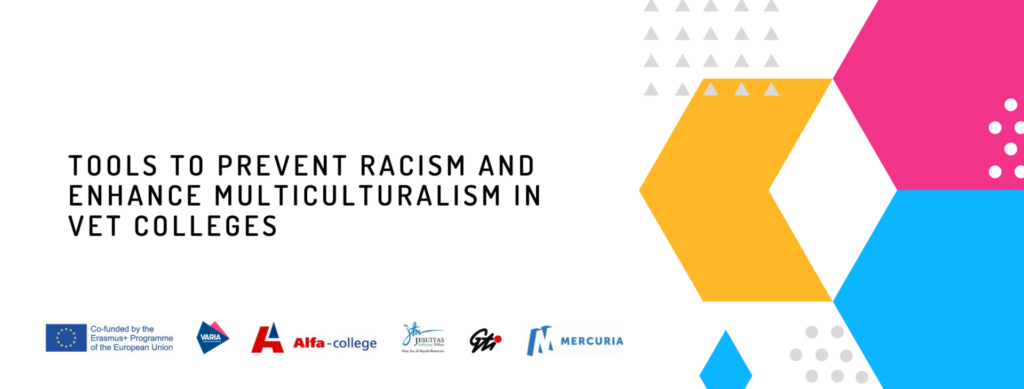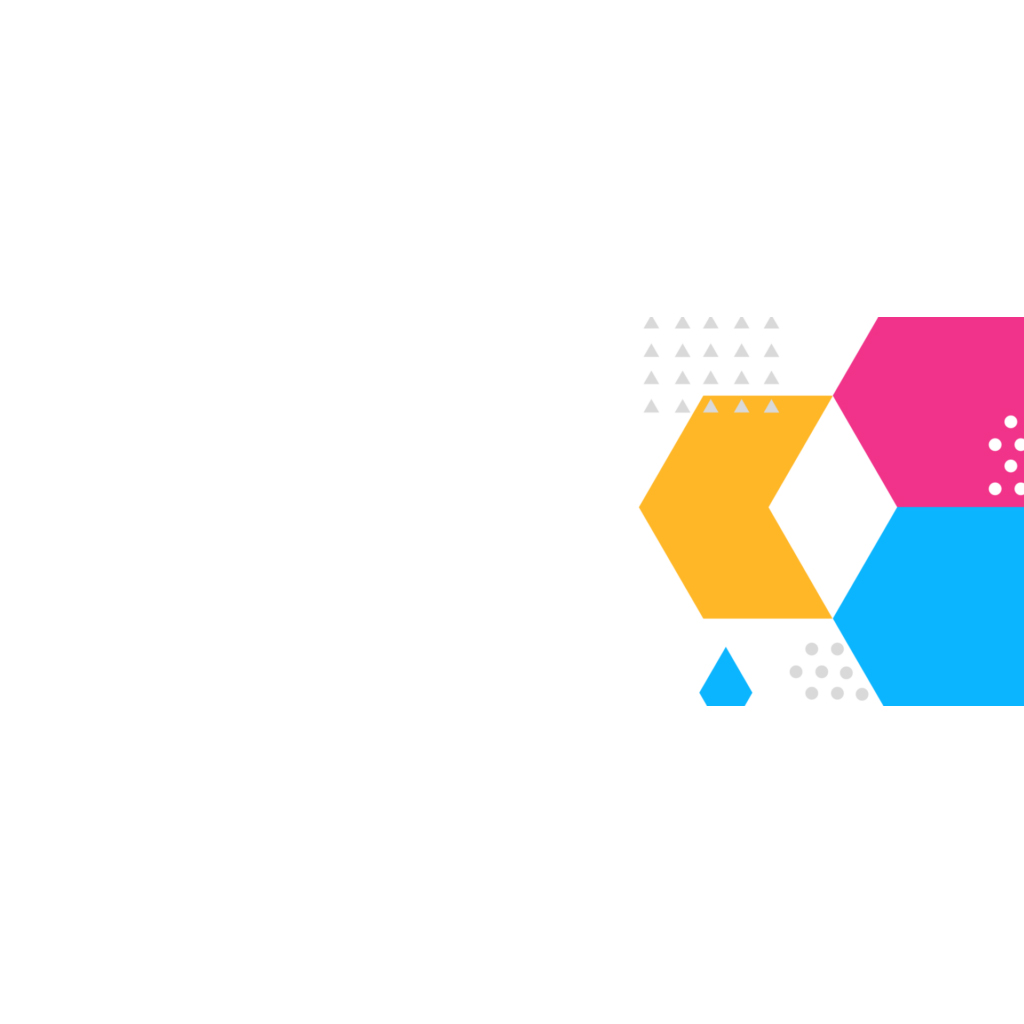
About the project
The purpose of the project was to design tools with which teachers could combat the world wide phenomenon that is racism. Quite a modest task, I am sure you will agree!
A group of educators from Finland, the Netherlands, Spain and Ireland came together within this Erasmus project to develop and try-out tools for educational purposes among teachers. However, as the project progressed we realized that some tools should not stop with teachers and should go further and reach students too.
The main goal of these tools was to raise awareness on discrimination, prejudice and racism within VET schools. Not only obvious racism but systemic racism that lies beneath, hidden in our institutions, culture & misguided preconceptions. Notwithstanding that we do not encounter racist attacks per se, we can be exposed to racism in our daily activities as teachers. For example, we need to change our mindsets, we need to check our own use of terminology, our preconceived ideas/prejudice inherited or otherwise, embedded in our minds.
Enable the tools below!
Tool 1: Posters and Cards
Goal
The goal is to create awareness of racism among students and school staff through posters.
Description
We’ve designed posters to hang in the school. The posters are ready and just need to be printed. You could choose to make a few more posters yourself or with your class. If you want to make posters yourself/with your class, please consider this:
- Choose a powerful visual design: Use images, colors, and symbols to convey equality and diversity. Consider how the design can grab attention and evoke an emotional response.
- Keep the message clear and concise: Use short and impactful phrases or quotes that convey the harmful effects of racism and the importance of combating it. Make sure the message is easily understandable and memorable.
- Provide educational information: Include facts, statistics, or historical examples that illustrate the impact of racism. This can help educate viewers and provide a deeper understanding of the issue.
- Showcase diverse representation: Feature a diverse range of individuals from different racial backgrounds, emphasizing the beauty and strength of diversity. Representation is important in challenging stereotypes and promoting inclusivity.
- Include a call to action: Encourage viewers to act against racism. This can be through joining anti-racism initiatives, educating themselves further, or fostering a welcoming and inclusive environment within the school.
Tool 2: Challenge – Wheels of Fortune
Goal
This tool aims to address racism and promote inclusion in vocational education. It provides a means to actively tackle challenges related to awareness, connection, and discussion within the classroom, focusing on the themes of inclusion and racism.
Description (for teachers)
The “Wheel of Fortune” approach involves assigning a challenge to each teacher in the team, which they will work on during the upcoming week or an agreed-upon timeframe. Subsequently, the teachers come together to discuss the outcomes. If necessary, the process can be repeated by spinning “the wheel” again or selecting a new challenge.
Description (for students)
Teachers can engage their students in the “Wheel of Fortune” game. A challenge is given to a group of students, and they work on it throughout the following week. The students then present their results to the whole class, followed by a discussion. If desired, the process can be repeated by spinning “the wheel” again to select a new challenge.
Tool 3: Calendar
Goal
The aim of this tool is to promote awareness, respect, and understanding of diverse religious traditions and holidays. By displaying all religious holidays on a calendar, individuals can gain insights into different faith practices and develop greater respect for various religious communities.
Promote awareness and respect
The tool fosters an inclusive environment where people of different religions feel recognized and valued. By including religious holidays on the calendar, it signifies that all religions and their celebrations are important, contributing to a sense of equality and inclusion.
Facilitate planning and understanding
The calendar featuring religious holidays helps in scheduling events, activities, and gatherings while considering the religious needs and observances of different groups. It also plays a role in preventing misunderstandings and conflicts by raising awareness among others about potential sensitivities associated with specific dates.
Description
The calendar includes holidays from various religions, such as Hinduism, Buddhism, Islam, Christianity, and Judaism. Each religion is assigned a distinct color on the calendar for easy identification. To enhance visual appeal and provide clarity, the calendar was created using the program Canva. Additionally, pictures are included to visually depict the themes of each holiday.
Please note that the calendar is specific to the year 2023, as religious holidays vary in dates from year to year.
Tool 4: Trustee
Goal
The goal of this tool is to establish a system where a student serves as a liaison between students and teachers/school administration. This student, known as the trustee, collaborates with the class teacher, counselor, or social safety personnel. They can be approached by students from the same school whenever incidents of racism or any form of discrimination occur.
Description
To select a suitable candidate for the trustee position, a list of requirements has been compiled. The candidate must possess the following qualities:
- Effective communication skills
- Open-mindedness
- Impartiality and lack of bias
- Emotional intelligence
- Empathy
- Strong observation skills
- Diligence
Additionally, a recruitment video can be used as part of the recruitment process. You can find the video in the provided folder (accessible via the provided link).
In the event of an incident, students are required to follow a specific procedure:
- Step 1: Locate the trustee.
- Step 2: Report the incident by filling out a form.
- Step 3: Assess the seriousness of the complaint.
- Step 4: Determine the appropriate person to approach, involving the victim.
It is important to note that different organizations may have varying approaches to recording instances of social safety and following procedures.
Tool 5: Crossword
Goal
The aim of this tool is to facilitate the understanding of key concepts related to racism and initiate meaningful conversations on the topic.
Description
This tool takes the form of a crossword puzzle that provides definitions for 10 different concepts associated with racism. The initial step involves sharing the crossword puzzle with teachers and engaging in discussions to clarify the true meanings behind these terms. It is important to address any misconceptions and ensure that everyone shares a common understanding when using these words. By completing the puzzle and engaging in discussions, participants can deepen their knowledge and promote accurate usage of these terms in conversations surrounding racism.
Tool 5 designed by the project.
Tool 6: If the World was Thirty People
Goal
The goal of this tool is threefold:
- Challenge misperceptions and acquire accurate information about the primary locations hosting the majority of the world’s displaced people and refugees.
- Understand global wealth distribution and its implications.
- Encourage critical reflection on the impact of widespread misinformation and stereotypes.
Description
To engage with this tool, begin by distributing the “population cards” among the continents based on your beliefs or assumptions. Similarly, distribute the “wealth cards” according to your perception of global wealth distribution. Next, compare your arrangement with the actual distribution of displaced people, refugees, and wealth globally. Reflect on the fairness of your results and consider the disparities between perception and reality. This exercise aims to prompt critical thinking about the effects of misinformation and stereotypes in shaping our understanding of these issues.
The materials and information needed are sourced from Beyond Borders and Galway One World Centre.
Tool 6 recommended by the project.
Tool 7: I Would Sit Next To…
Goal
The objective of this tool is to raise awareness about the prejudices that everyone holds.
Description
This tool facilitates discussions about prejudices by using images that evoke different associations in individuals. Participants are encouraged to reflect on the impressions and preconceived notions these images may elicit. The goal is to explore and confront personal biases, fostering greater self-awareness and understanding of the prejudices we all carry.
Tool 7 recommended by the project.
Tool 8: White Privilege Quiz
Goal
The goal of this tool is to promote awareness of privilege based on one’s identity, background, and context.
Description
To utilize this tool, each statement is written on separate cards, which are then placed in a bowl or jar. Each team member can select a card and reflect upon the statement they have chosen. This reflection can be followed by a group discussion, providing an opportunity for individuals to share their thoughts, perspectives, and insights related to privilege. The purpose is to encourage self-awareness and deepen understanding of how privilege operates within various contexts.
Tool 8 designed by the project.
Tool 9: Make it Real
Goal
The goal of this tool is to provide students with real-life examples through videos, fostering a deeper understanding of the subject matter.
Description
This tool involves showing students videos or clips to illustrate real-life scenarios. Examples of videos can be found at the links provided below. Note that videos are external links and may not necessarily open in all locations/countries.
After watching the video, initiate a discussion with the students by asking the following questions:
- What was the clip about?
- How do the people involved in the video feel?
- What are the different reactions shown in the video?
- What types of body language did you observe?
- How would you feel if you were in a similar situation?
- How do you think you would react?
These questions encourage students to reflect on the content of the video, analyze the emotions and reactions of the individuals involved, and explore their own perspectives and responses.
Tool 9 recommended by the project.
Tool 10: Group Image
Goal
The goal of this tool is to create a visual representation of the class and get to know each member by capturing their background information.
Description
In this activity, students will work in pairs using paper and pens. The steps involved are as follows:
- Each student will draw a picture of their partner’s face in one corner of the paper.
- Next, students will write down the answers to a set of interview questions provided.
The interview questions are as follows:
- Where are you coming from, in one word?
- Where are you coming from, in one sentence?
- What languages can you speak?
- Why did you choose to join this group/school, etc.?
- What are your expectations?
Once completed, these papers will be displayed on the walls of the classroom, forming a collective picture of the class. This visual representation will allow students to learn about one another’s backgrounds, fostering a sense of connection and understanding within the group.
Tool 10 recommended by the project.

Conclusion
Overall, participation in the Tools Against Racism project was a very eye opening, reflective, informative, educational & on occassion challenging experience. Participants felt a sense of solidarity within the group with a common goal, borders were crossed both literally and metaphorically. We were humbled at times and found both human and professional synergies.
Nevertheless, we were faced with a recurring difficulty during this project, Tools Against Racism is a challenging topic to include on a daily basis into your curriculum. Every teacher is focused on their work which is usually guided by a syllabus and they are unsure how to integrate these issues within their lessons. Many teachers feel it is not their responsibility to tackle these topics, that it is not their concern.
However, the main lessons learned are as follows; the change starts from within oneself. You can not change something you do not acknowledge or that you cannot identify with. We first need to be aware of our own biases or preconceived ideas.
Therefore, tools could be divided into three categories firstly with an internal analysis of ourselves/personal work, then working with other teachers and finally, working with students. Our hope is that society starts transforming gradually in an intergenerational way, cultivating positive affirmations around the use of Tools against Racism in our colleges, our communities & the ultimately the world.
Tools to prevent racism and enhance multiculturalism in VET colleges
Project period 31.12.2020–29.6.2023
Funder Erasmus+ KA2 – Opetushallitus
Coordinator Vantaan ammattiopisto Varia
Partners Alfa-College (The Netherlands), Colegio Nuestra Señora de Begoña (Spain), Galway Technical Institute (Ireland), Vantaan ammattiopisto Varia (Finland) and Mercuria Business College (Finland)
The European Commission is not responsible for the content of this publication. More information about the Erasmus+ program www.oph.fi/erasmusplus.

